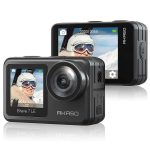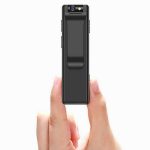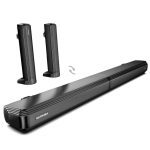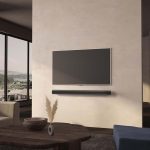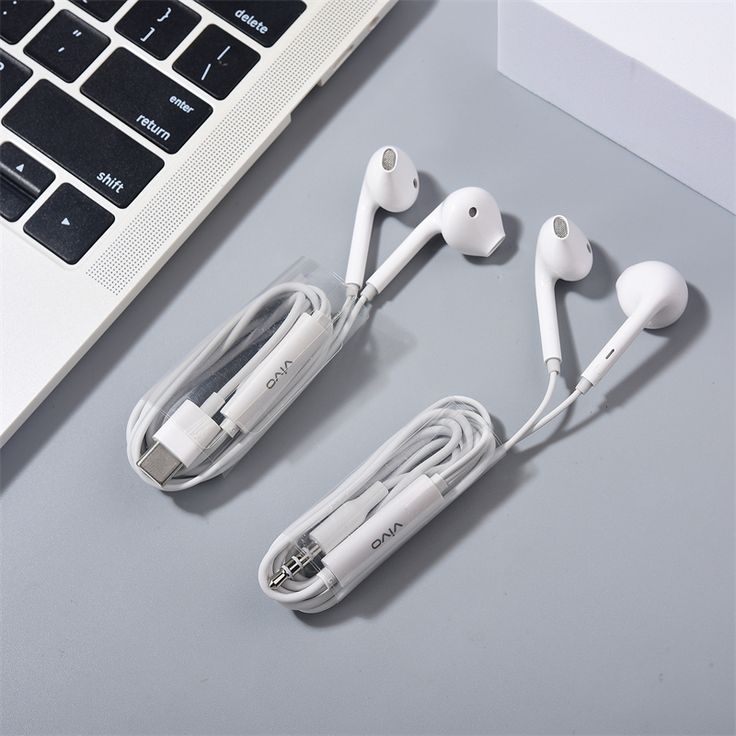Current Trends in Earphone & Headphone Usage
The earphone and headphone market is evolving rapidly with consumer habits at the center of change. Users now demand more from their audio devices, not just in terms of sound quality but also comfort, design, and additional features like smart assistance and health monitoring. As convenience becomes king, wireless earphones and headphones are becoming increasingly popular for their cord-free experience, seeing a significant rise in sales across demographics.
To match the fast-paced lifestyle of modern consumers, portability is now a key factor in purchase decisions. Compact, lightweight, and foldable designs are favoured, allowing users to easily carry their devices wherever they go. Active noise cancellation (ANC) has also become a deciding feature for many, especially those who use public transportation, allowing for an immersive listening experience by blocking out ambient noise.
Another noticeable trend is the growing interest in high-resolution audio, with discerning audiophiles seeking out earphones and headphones capable of delivering studio-quality sound. This quest for superior acoustics has spurred manufacturers to innovate and integrate high-end audio codecs, like aptX HD and LDAC, into their products.
Smart features are also on the rise, with consumers looking to integrate their earphones and headphones with their broader ecosystem of devices. These smart devices often include touch controls, voice assistants, and seamless switching between multiple connection sources, such as smartphones and laptops.
Lastly, there’s an increasing emphasis on durability and battery life. Consumers want earphones and headphones that not only stand the test of time but also offer long hours of playback on a single charge, reducing the need for frequent recharging and making them ideal for extended use.
The earphone and headphone market continues to grow and adapt, meeting the ever-changing needs and preferences of users worldwide. These trends reflect a market that is highly responsive to technological innovations and consumer demands.
An Overview of Earphone & Headphone Market Segmentation

Understanding the diverse market segmentation is key to navigating the earphone and headphone landscape. This segmentation allows us to see consumer patterns and preferences more clearly. Broadly, the market divides into several categories based on different user needs and features.
Firstly, we have the basic earphones and headphones, aimed at casual listeners. They offer essential functions and are cost-effective. Users who prioritize affordability often choose these models.
Next are the high-end audiophile-grade devices. They cater to those seeking superior sound quality. These often feature advanced audio codecs and premium materials.
Wireless earbuds and headsets form their own category. These are popular with users who value freedom from cords and ease of movement.
Noise-cancelling earphones and headphones are popular in noisy environments. They allow users to enjoy clear audio without external disturbances.
Sports earphones and headphones offer features like sweat resistance and secure fit. These are designed for active users who need durability during workouts.
Gaming headsets are tailored for immersive gameplay. They often include features like surround sound and built-in microphones.
Lastly, the smart earphones and headphones are for tech-savvy users. They integrate with other devices and include features like voice assistants and touch controls.
Each segment meets specific consumer needs and sees varying levels of demand. Understanding these segments helps manufacturers and retailers tailor their offerings and marketing strategies. It also aids consumers in making informed purchase decisions.
Technological Advancements in Audio Devices
The earphone and headphone market has seen remarkable technological advancements. These innovations cater to diverse user demands and push the boundaries of what audio devices can do.
Key advancements include Bluetooth 5.0 and its successors. These offer better range and more stable connections for wireless devices. Users enjoy seamless audio without the worry of disconnections. This is essential for those on the move.
Battery life improvements also stand out. Many devices now boast day-long playtime. This reduces the need for frequent charging, fitting busy lifestyles.
Sound quality has not been left behind. Companies now incorporate advanced audio codecs. This ensures that even wireless earphones deliver rich, high-fidelity sound.
We also see the rise of smart headphones. These come with built-in AI and voice assistants. Users can control their audio experience with simple voice commands, aligning with the needs of tech-savvy consumers.
Active noise cancellation technology has become more refined. It allows for an immersive experience even in noisy environments. This tech is a favorite among commuters and travelers.
Finally, we must mention health-focused features. Today’s devices can monitor heart rate and track fitness metrics. Health-conscious users appreciate this dual functionality.
These advancements shape the earphone and headphone market. They drive consumer interest and define industry standards. Manufacturers who stay ahead of these trends often see greater success.
Comparing In-Ear, On-Ear, and Over-Ear Models

When choosing earphones or headphones, design is crucial. In-ear, on-ear, and over-ear models offer different experiences. Let’s explore their features.
In-Ear Models
In-ear models, also known as earbuds, fit directly into the ear canal. They are compact and perfect for an active lifestyle. Often, they are the go-to option for sports enthusiasts due to their snug fit. Yet, some users find them less comfortable for long periods.
On-Ear Models
On-ear headphones sit on the outer ear. They are more noticeable than in-ear models but less so than over-ear types. These headphones are more breathable and can offer good sound quality. However, they may apply pressure to the ears, causing discomfort over time.
Over-Ear Models
Over-ear headphones fully encase the ears. These often provide superior sound isolation and a rich audio experience. They are ideal for audiophiles and long listening sessions. While bulkier, the added comfort and sound quality make them a favorite for many.
Each type plays a role in the earphone and headphone market. Users pick models based on comfort, convenience, and sound preference. This diversity reflects the market’s ability to cater to different consumers and their unique needs.
The Role of Branding in Consumer Choices
Branding is a powerful factor in the earphone and headphone market. It influences how customers perceive and choose products. Here’s how branding impacts consumer choices:
- Recognition and Trust: Well-known brands often carry a level of trust. Consumers believe in their quality and performance.
- Status Symbol: Owning a product from a prestigious brand can be a status symbol. It reflects personal style and status.
- Product Differentiation: Through branding, companies highlight unique features. This sets their products apart in a crowded market.
- Emotional Connection: Brands that evoke positive emotions tend to attract loyal customers. This emotional bond can lead to repeat purchases.
- Consumer Satisfaction: Brands with a reputation for customer satisfaction retain customers. Good after-sales service is crucial here.
- Innovation as a Driver: Brands that regularly innovate create excitement. This draws in tech enthusiasts looking for the latest features.
In summary, branding can sway the decision-making process of buyers significantly. It works alongside product features, quality, and price. Consumers seeking new audio devices weigh brand reputation heavily. As a result, manufacturers invest in brand strength to capture and retain customers. Marketers, too, must understand branding’s power to craft impactful strategies.
Niche Markets: Sports and Gaming Headsets
The earphone and headphone market includes niche markets addressing the unique needs of specific consumer groups. Notably, sports and gaming headsets are two distinct segments that cater to diverse interests and demands.
Sports Headsets
Sports headsets prioritize durability, a secure fit, and water resistance. They cater to users who lead active lifestyles and require devices that withstand rigorous movement and sweating. Innovations have led to ultra-lightweight designs that ensure comfort during extended use. Many sports headsets now also offer motivating audio cues and fitness tracking capabilities, which appeal to health-conscious consumers.
Gaming Headsets
Gaming headsets, on the other hand, focus on immersive audio experience and clear communication. They feature surround sound and precise audio detailing, crucial for gameplay. Built-in microphones and noise-reduction technologies allow gamers to communicate without interruptions. Some gaming headsets even come with customizable sound settings, enhancing personalization for the user.
In these niche markets, both sports and gaming headsets are seeing technological enhancements like improved battery life and advanced connectivity options, which match the diverse and evolving user expectations. Brands are keenly aware of these specific market segments and are creating specialized products to fulfill their customers’ needs. As gaming and fitness continue to grow in popularity, so does the demand for high-quality, specialized earphones and headphones designed to enhance these experiences.
The Impact of Wireless Technology on Market Growth
Wireless technology has revolutionized the earphone and headphone market. Its impact on market growth is undeniable. Here’s how it has fueled the industry’s expansion:
- Convenience Factor: Wireless earphones and headphones offer unparalleled convenience. The elimination of cords has made them a top choice for consumers on the go.
- Tech Integration: With wireless tech, it’s easier to integrate other features. These include smart assistants, health tracking, and touch controls. All of these features attract tech-savvy buyers.
- Improved Connectivity: Advancements like Bluetooth 5.0 have made connections more stable. This reliability has increased consumer confidence in wireless audio devices.
- Portability: The cordless nature makes these devices highly portable. This appeals to consumers who want their devices to be as mobile as they are.
- Innovative Designs: Wireless technology allows for sleeker, more innovative designs. This has a strong appeal, especially to the younger demographic that values aesthetics alongside functionality.
- Market Expansion: Wireless earphones and headphones have expanded the market itself. They’ve introduced new consumer segments, including fitness enthusiasts and remote workers who require freedom of movement.
- Competitive Edge: Brands that have excelled in wireless technology often gain a competitive edge. They’re seen as industry leaders, influencing consumer preferences and choices.
In conclusion, wireless technology has played a critical role in driving the growth of the earphone and headphone market. It has met the demand for convenience and innovation, which continues to shape consumer expectations and preferences.
Sustainability and Eco-Friendly Audio Solutions

The earphone and headphone market is not just about technological leaps. It’s pacing towards sustainability. Consumers now show a strong preference for eco-friendly products. This shift drives manufacturers to explore sustainable materials and processes.
Companies are incorporating biodegradable components in their designs. They are also removing hazardous substances and opting for recyclable packaging. By doing so, they reduce environmental impact.
To save energy, manufacturers are improving battery efficiency. This leads to longer life cycles and less waste. Many brands now offer earphones and headphones with renewable energy features, such as solar charging capabilities.
Some manufacturers have started take-back programs. These initiatives encourage users to recycle their old devices. They help prevent electronic waste from piling up in landfills.
Innovation extends to creating smaller, more efficient drivers. This effort results in products that require fewer resources to manufacture. Smaller drivers often translate to more compact and lighter devices.
Brands are also communicating their eco-friendly efforts more transparently. This builds trust with environmentally conscious customers. It sets them apart in a crowded market.
Finally, consumers are showing willingness to invest in sustainable products. They are even ready to pay a premium for eco-friendly earphones and headphones. This trend underlines the importance of sustainability in future market growth.

